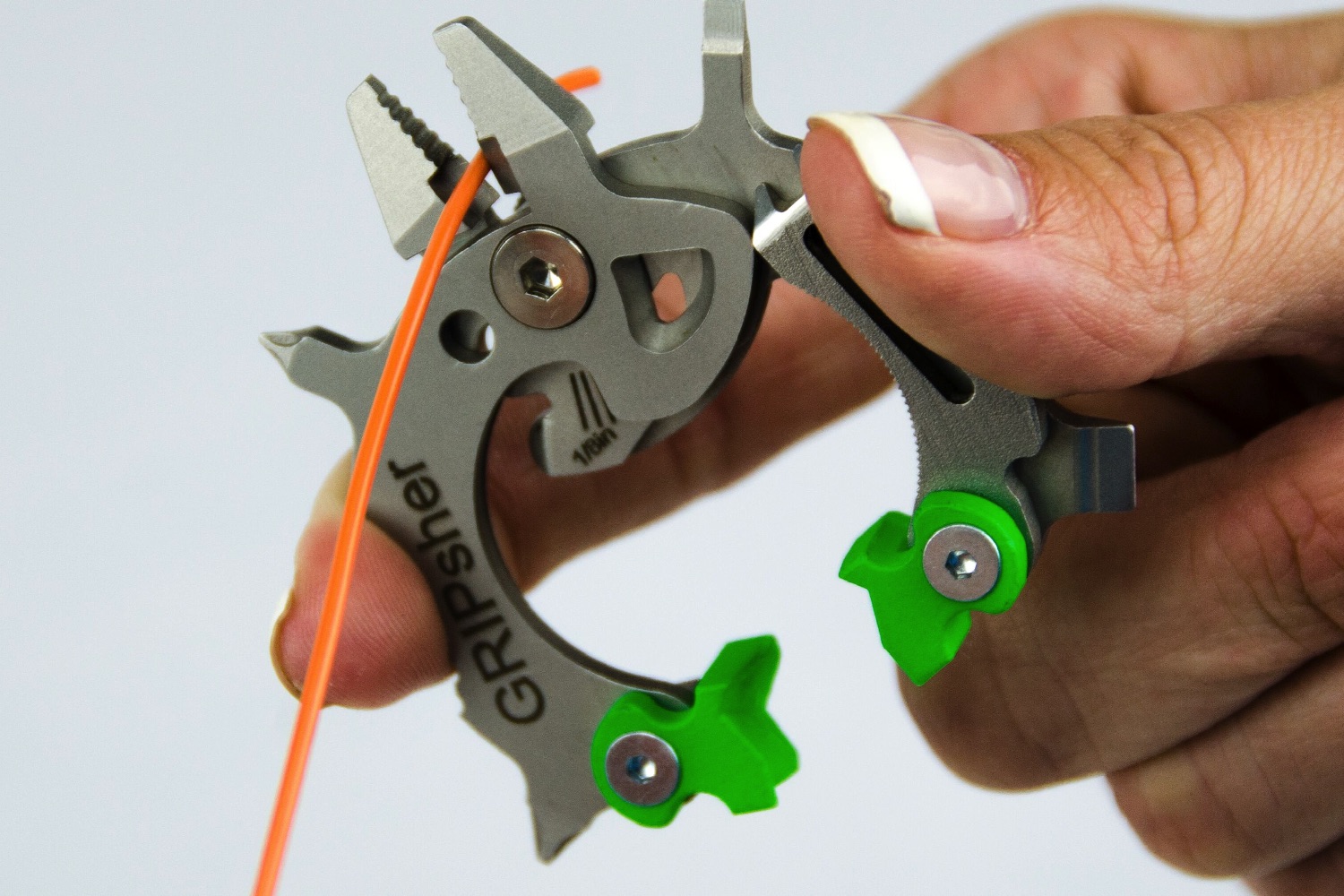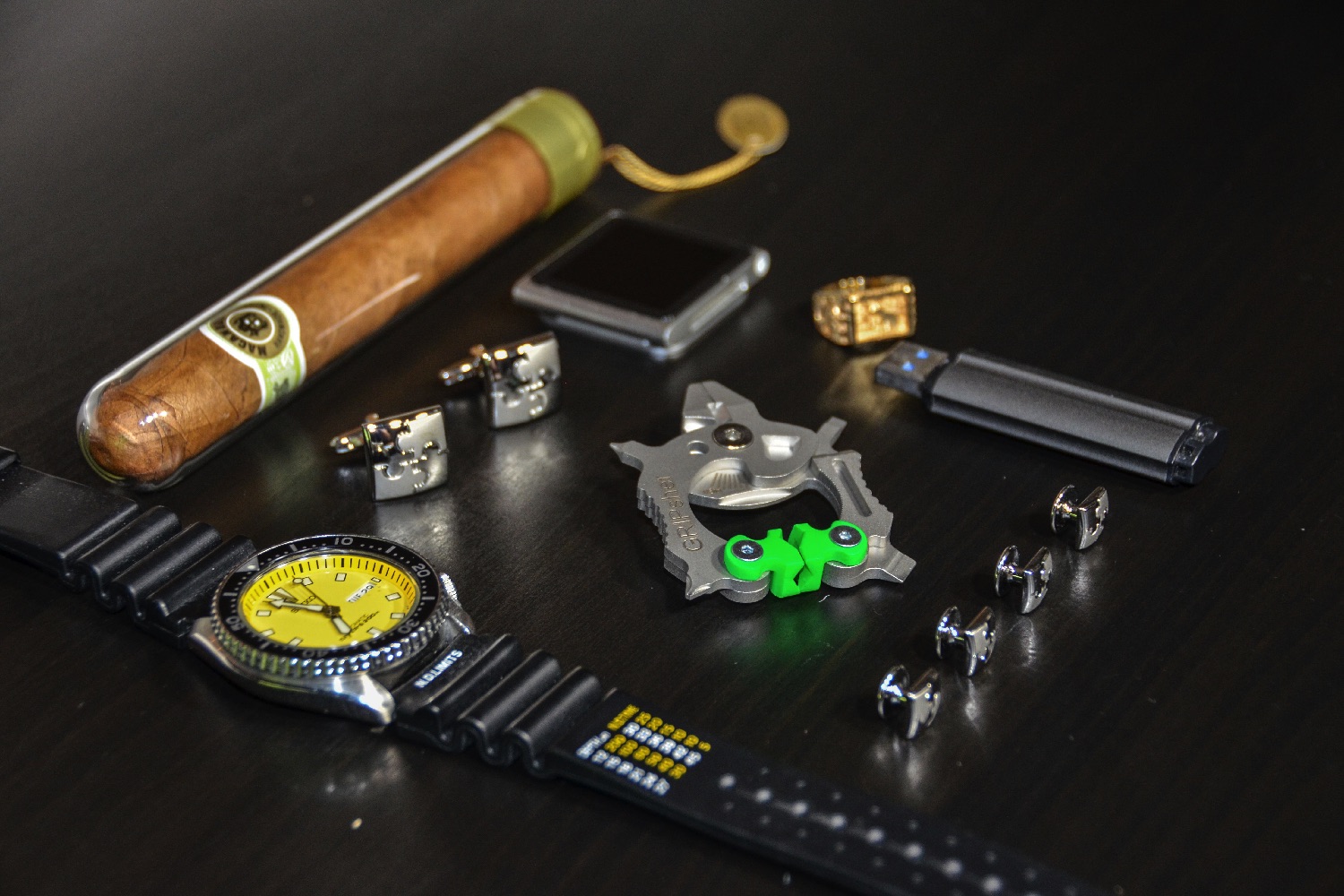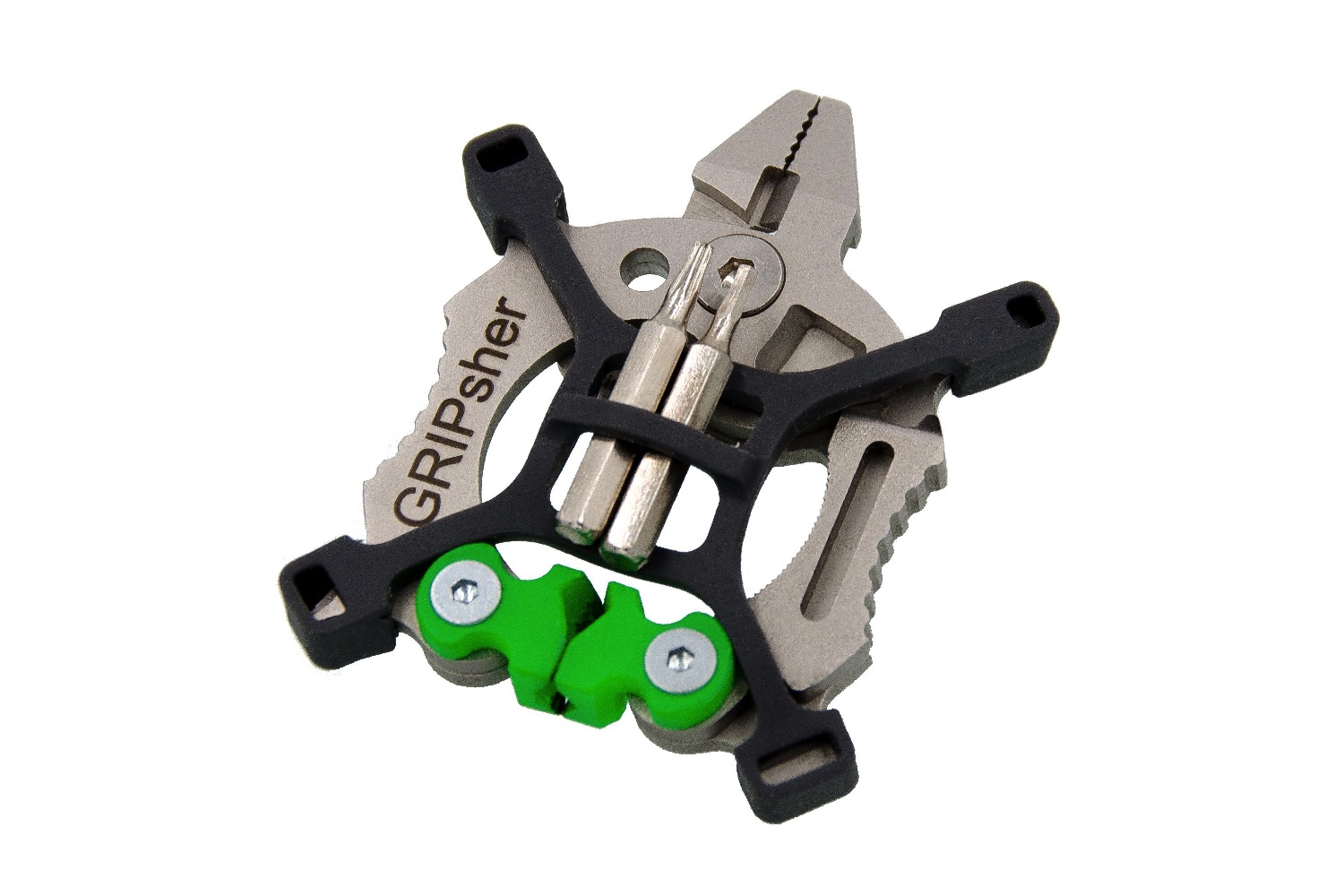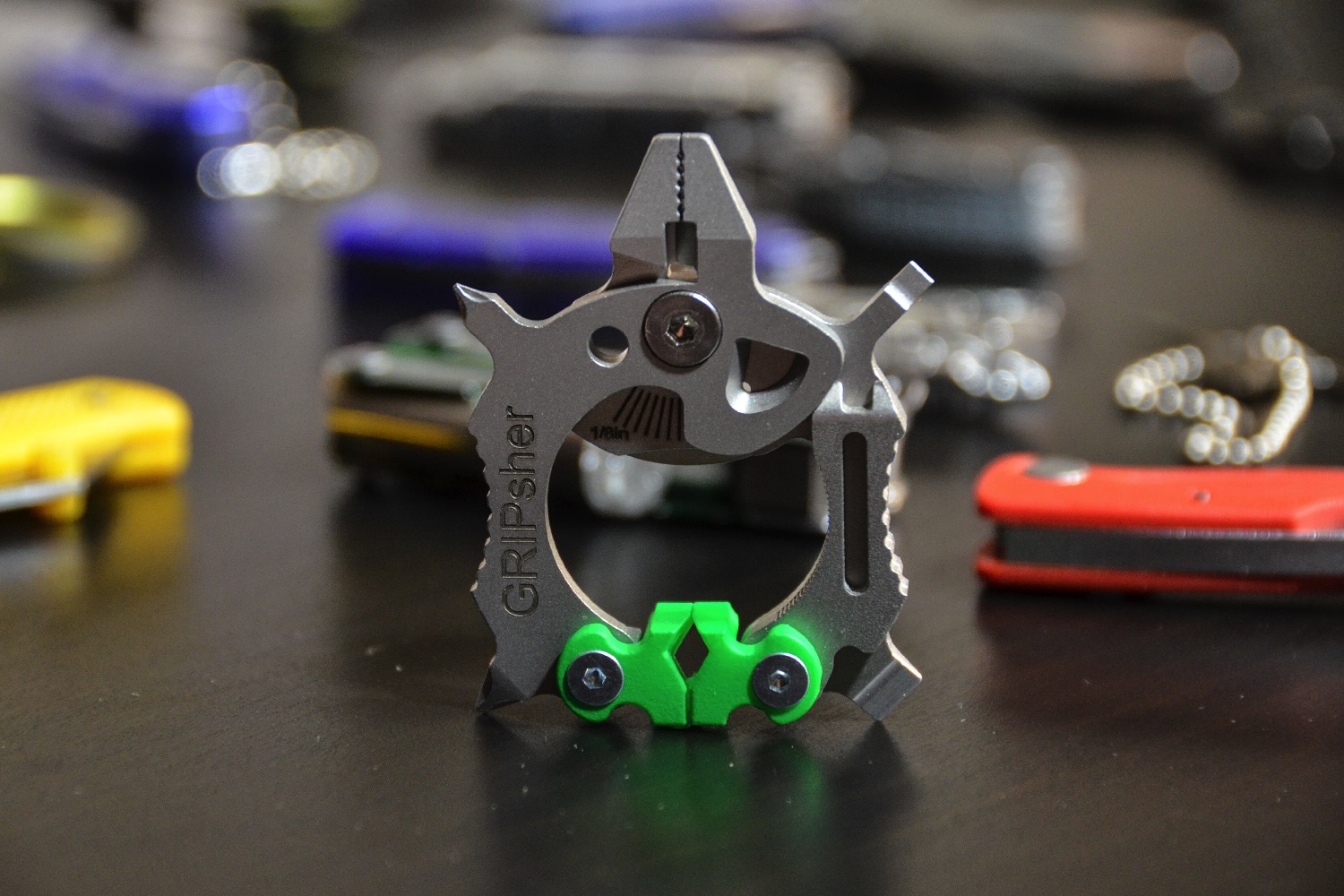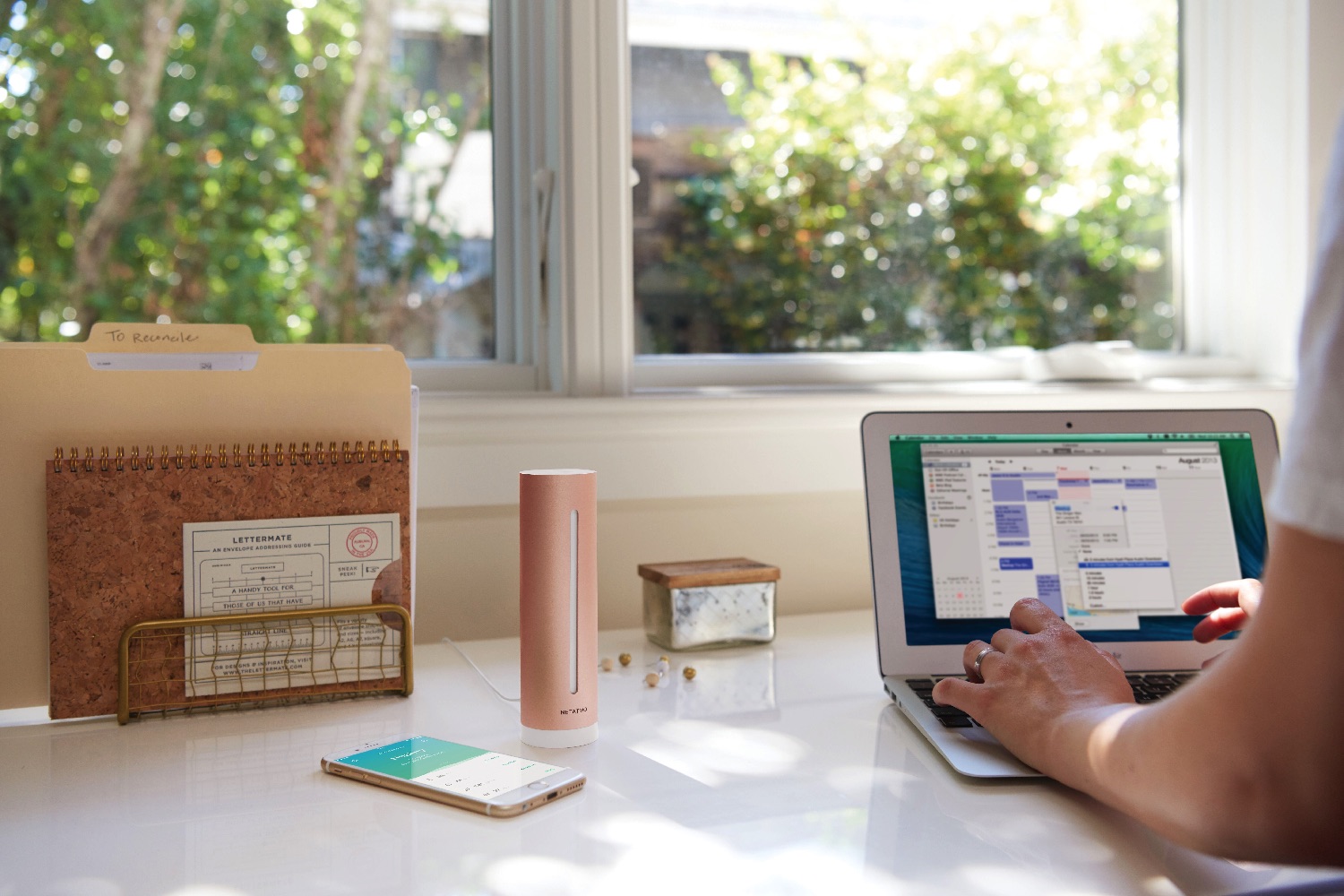GRIPsher is just such a creation. It offers — deep breath — pliers, wire cutters, adjustable wire strippers, various screwdrivers, grip indents, a bottle opener, a material thickness gauge, a hex bit holder, a slot wrench, a heavy-duty knife, a clamp, a deburring file, and much more, all in an easily portable package.
“I started out with a very basic tool that was simply two jaws that were meant to measure the thickness of material,” creator Christian Reed told Digital Trends. “From there, it expanded. At first, I wondered whether I could add screwdrivers to it, then I thought about pliers, and so on. The limiting factor was really how big I wanted the tool to be. I set a size limit, which was around 3-4cm at its major axis. Once I had worked that out, it was just a matter of working out how I could optimize that space to utilize every function. There’s no dead space. I let my imagination run wild.”
Reed had time — kind of — to let his imagination run wild. As an army veteran, he was deployed overseas shortly after graduating with a degree in mechanical engineering from the Massachusetts Institute of Technology. While a deployment certainly is not known for its long periods of downtime, Reed used what free time he had to sketch out ideas in a notebook.
“When I eventually got home, I had a couple of cardboard models I’d made of GRIPsher,” he said. “That’s when I moved on to 3D printing the prototypes.”
Currently, GRIPsher is raising funds on Kickstarter. With 46 days still to go, it has almost doubled its $10,000 fundraising goal. Early units are set to ship in March 2017, with an early bird price of $35 and up for people who pledge now. To get involved, check out the link at the top of this page.
And then get ready to throw out most of the tools you’ve got lying around your house!
Editors' Recommendations
- Google One subscribers now have enhanced photo-editing tools on iPhones
- Kickstarter loses 40% of its staff after a wave of layoffs and buyouts
- Kickstarter’s new budget tool could save projects from collapse
- The hands on this clock are made from an experimental magnetic rocket fuel
- Amazon chops the price for the 8-quart Ninja Foodi all-in-one multi-cooker
